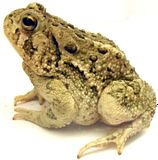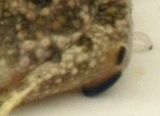SludgeMunkey
New member
- Joined
- Nov 11, 2008
- Messages
- 2,299
- Reaction score
- 80
- Points
- 0
- Location
- Bellevue, Nebraska
- Country
- United States
- Display Name
- Johnny O. Farnen
Hello folks!
Any of you experts have an opinion on this one?
I feel this is a Woodhouse's Toad, but I am not sure. It was collected in the only area of Nebraska to have B. americanus, B. woodhousii, and B. cognatus simultaneously. I am sure it is NOT cognatus, but could it be americanus? Possibly a hybrid? I am having real trouble getting a definate identification on my end.



Sorry for the small pictures/ broken links...I exceeded my Flikr bandwidth and am stuck using this clunky Photobucket interface instead.
Any of you experts have an opinion on this one?
I feel this is a Woodhouse's Toad, but I am not sure. It was collected in the only area of Nebraska to have B. americanus, B. woodhousii, and B. cognatus simultaneously. I am sure it is NOT cognatus, but could it be americanus? Possibly a hybrid? I am having real trouble getting a definate identification on my end.



Sorry for the small pictures/ broken links...I exceeded my Flikr bandwidth and am stuck using this clunky Photobucket interface instead.
Last edited:




